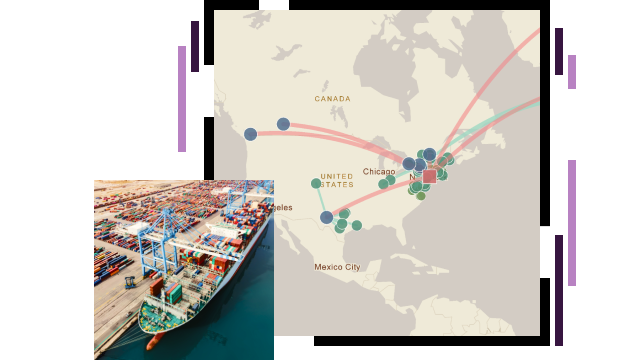Visualize fixed and moving assets
Set up the digital foundation of supply chain traceability with a supply network map. Proactively adjust to real-time market conditions and disruptions through supply chain visualization of fixed and mobile assets and transportation hubs. Use location intelligence to achieve the benefits of supply chain transparency for risk mitigation, optimal service delivery, compliance, and long-term sustainable development.







